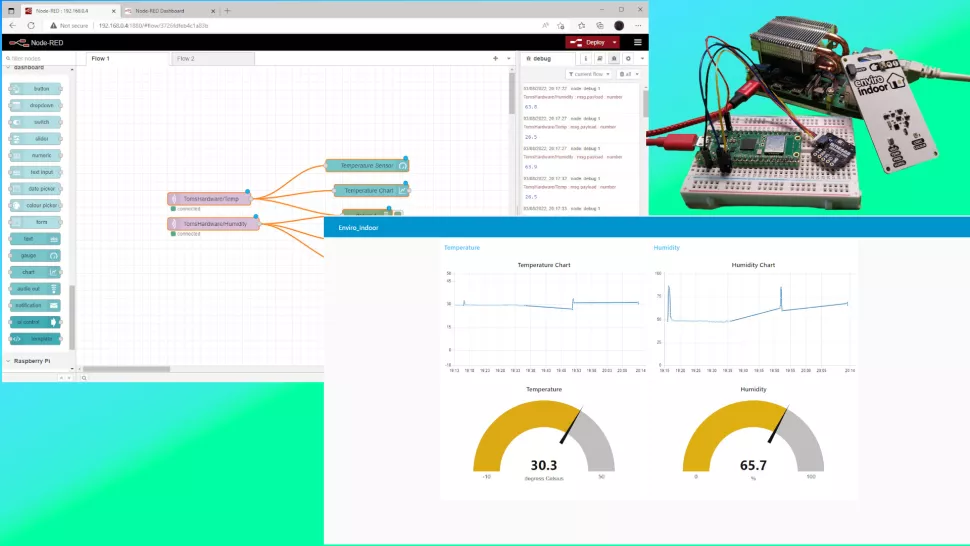Open Hardware: MQTT, Pong, STM32, and MicroPython

-
How to Use Raspberry Pi Pico W With Node-RED
In a previous how to, we introduced MQTT (Message Query Telemetry Transport) with the $6 Raspberry Pi Pico W. In that tutorial we kept things relatively simple. Publishing and subscribing to messages using a little MicroPython and an MQTT broker. We then used an online MQTT service to interact with the Pico W. This proved that everything worked, but in this how-to, we are going to kick things up a notch and build a web application using very little code.
-
The Pong you could program, possibly: the MOS 7600/7601
What's odd about the MOS 7600/1 is that everyone seems to have a clear idea of what it can do, but there's yet to be any hard proof like an available datasheet to substantiate it. Most of the sites that talk about it (including, I must admit, my entry at the Secret Weapons of Commodore) make reference to the other sites in terms of its specifications, which circularly point at other sites which point back at the originals. In any event, what allegedly made the 7600 unique compared to the TI, NS and GI silicon-Pong designs was that instead of hardwired circuitry it supposedly had a mask ROM containing the game programming and a primitive internal CPU to run it (though it did use internal discrete circuitry for the graphics and audio; more in a moment). This internal ROM is confidently and consistently described as 512 "words," despite no surviving MOS or CSG spec sheet to back that up, nor any idea what the actual word size is (possibly eight bits, but at that time could have been four). On the other hand, given the constraints MOS was working under, it isn't inconceivable that they might have used some of the pre-existing work from the 6501/2 and combined it with a ROM and some internal static RAM and colour video circuitry to get a superior working design up quick. In that sense the mask ROM would have been an advantage, as it could be customized by/for any potential vendor. And MOS knew how to make cheap chips, another obvious advantage in a market with low margins.
-
Debugging bare-metal STM32 from the seventh level of hell
Here’s a not-so-brief story about troubleshooting a problem that was at times vexing, impossible, incredibly challenging, frustrating, and all around just a terrible time with the bare-metal STM32G4 firmware for the moteus brushless motor controller.
-
Big Mouth Billy Bass meets Raspberry Pi Pico W
He then wrote a MicroPython class to give easy access to the pins that control particular motors in Billy’s various fishy moving parts, and html code so that visitors to his Pico W’s website can control Billy from a distance – the best way to experience Big Mouth Billy Bass.
-
PixMob Wristband Protocol Reverse-Engineering Groundwork
The idea behind the PixMob wristband is simple — at a concert, organizers hand these out to the concertgoers, and during the show, infrared projectors are used to transmit commands so they all light up in sync. Sometimes, attendees would be allowed to take these bracelets home after the event, and a few hackers have taken a shot at reusing them.
